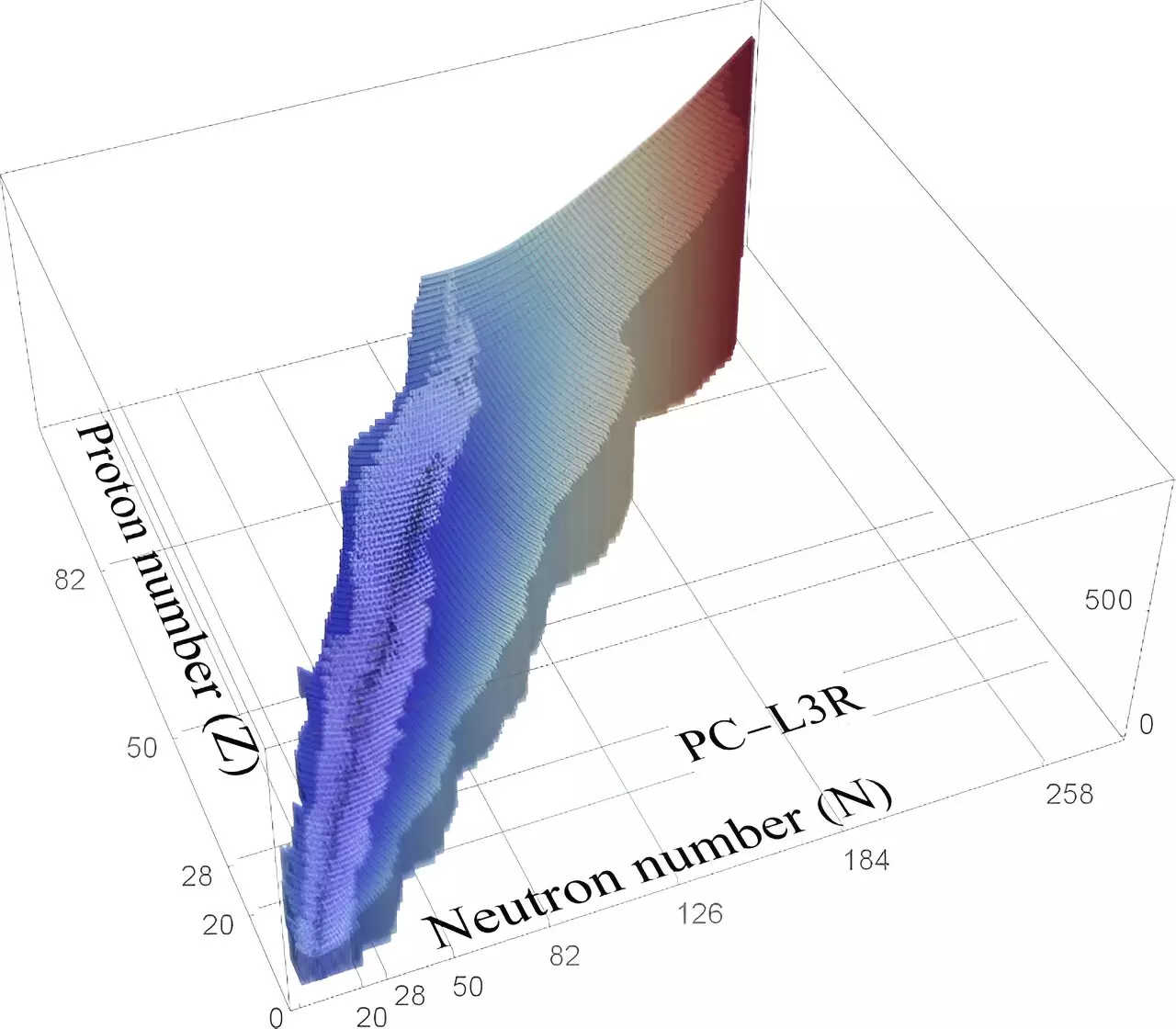The study of exotic nuclei and their properties has always been of great importance in the field of nuclear physics. With the advent of new generation radioactive-ion beam facilities, researchers now have the opportunity to conduct previously challenging experiments that can deepen our understanding of the origins of the chemical elements in the universe. In a recent study conducted by researchers from the Institute of Modern Physics (IMP) of the Chinese Academy of Sciences (CAS), in collaboration with Technische Universität München, the existence of exotic nuclei was predicted using the covariant density functional theory. This groundbreaking study has the potential to unlock new insights into the physics related to exotic nuclei far from the β-stability valley.
The covariant density functional theory is a highly successful approach for studying the nuclear structure. By describing the interactions among nucleons in the nuclear medium, this theory provides researchers with a framework to explore the ground state properties of various isotopic chains. In the study conducted by the IMP and CAS, researchers utilized the relativistic Hartree-Bogoliubov approach and one of two types of nucleon-nucleon interactions to systematically investigate the ground state properties of isotopic chains ranging from oxygen to darmstadtium. These properties include binding energies, separation energies, radii of matter, neutron, proton, and charge distribution, Fermi surfaces, ground-state spins, and parities.
The discovery of new isotopes and the determination of the limits of isotopic chains are crucial for advancing our understanding of nuclear physics. Measuring the characteristics, such as nuclear masses, radii, and half-lives, of these newly discovered isotopes is essential to confirm their existence and expand our knowledge of exotic nuclei. Moreover, studying the last bound nuclei of isotopic chains not only allows us to test nuclear theories but also sheds light on the extent of nucleosyntheses in extreme astrophysical environments, such as neutron star mergers, core-collapsed supernovae, and X-ray bursts.
A Journey into the Quantum Realm
Exotic nuclei that exhibit new phenomena serve as a testing ground for our understanding of quantum many-body systems. With approximately 2,500 experimentally proven nuclides, there is still much to explore and discover. The researchers involved in this study anticipate that new facilities will be instrumental in the discovery of more exotic nuclei and the unraveling of phenomena that have never been observed before. By comparing theoretical predictions with experimental findings, scientists can further validate and refine their theoretical models, thus pushing the boundaries of our knowledge even further.
The ground-state properties of nuclei predicted in this study have far-reaching implications for future experiments and theoretical research in nuclear physics. The results can provide valuable guidance for researchers in their investigations of the drip line of neutron and proton, the halo phenomenon, and the new magic number problem. Understanding these fundamental aspects of nuclear physics can pave the way for more precise predictions and groundbreaking discoveries in the field.
The prediction and exploration of exotic nuclei using the covariant density functional theory open up new avenues of research in nuclear physics. By unraveling the mysteries of isotopic chains and pushing the boundaries of our understanding, scientists can deepen their knowledge of the origins of the chemical elements in the universe. The collaboration between the IMP, CAS, and Technische Universität München marks an important milestone in our quest to uncover the secrets of exotic nuclei and advance our understanding of the universe. With new facilities on the horizon, the future of nuclear physics is bright, promising exciting new discoveries and invaluable insights into the underlying physics of our universe.


Leave a Reply